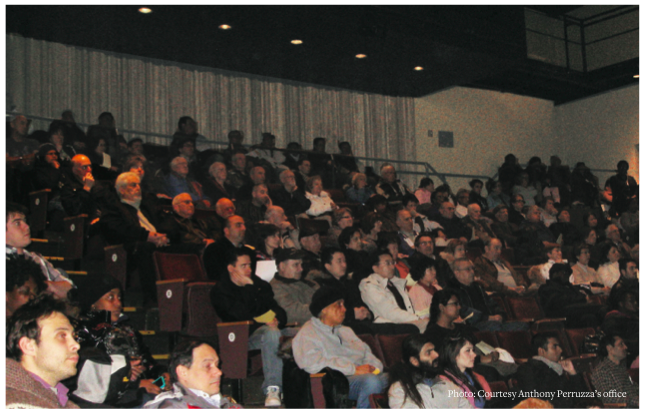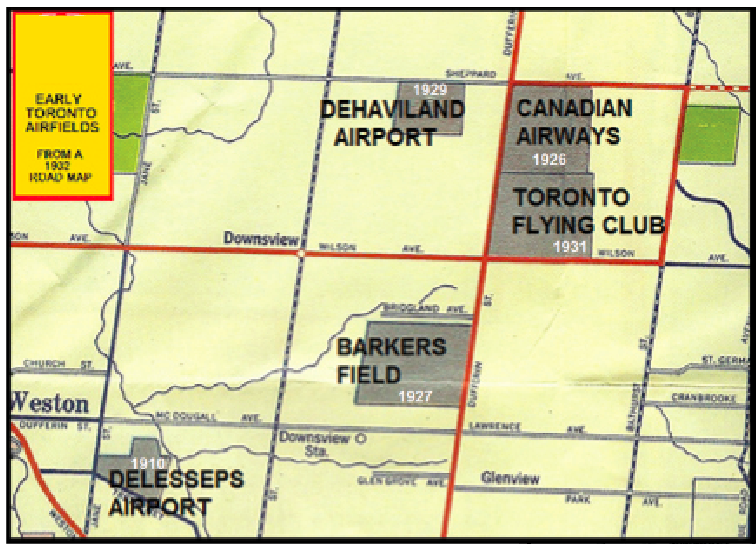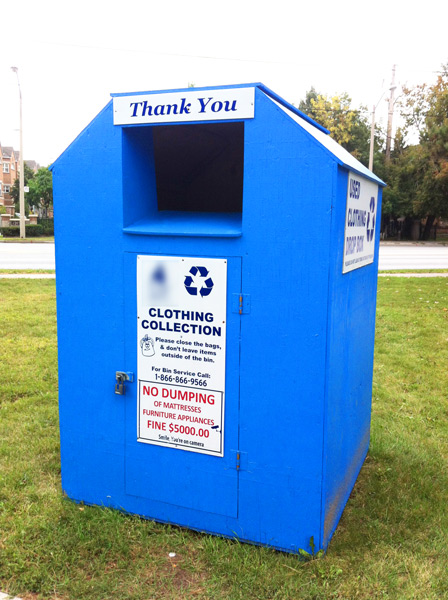 By Tom Rakocevic
By Tom Rakocevic Your quiet unassuming neighbour may have an incredible story. Perhaps it’s a heart-warming tale or even a miracle. Maybe through fortitude or sheer luck they were able to overcome impossible odds to survive a disaster. You’d never know as they leisurely tend to their garden and give you a friendly wave.We all have our stories; the older you are, the more you have. This new column entitled, “My Story” celebrates the fascinating lives of our community members by having them share an interesting experience. If you have a unique story you wish to tell in an upcoming issue, or know somebody that does, contact the Downsview Advocate at info@downsviewadvocate.ca.
Your quiet unassuming neighbour may have an incredible story. Perhaps it’s a heart-warming tale or even a miracle. Maybe through fortitude or sheer luck they were able to overcome impossible odds to survive a disaster. You’d never know as they leisurely tend to their garden and give you a friendly wave.We all have our stories; the older you are, the more you have. This new column entitled, “My Story” celebrates the fascinating lives of our community members by having them share an interesting experience. If you have a unique story you wish to tell in an upcoming issue, or know somebody that does, contact the Downsview Advocate at info@downsviewadvocate.ca. “Oh salty sea, how much of your saltAre tears of Portugal!To get across you, how many mothers cried,How many sons prayed in vain.”Fernando PessoaThough Armindo Silva immigrated to Canada in 1970, it wasn’t the first time he set foot in our country. In 1947, two years before Newfoundland joined confederation, the “Milena” a 700 hundred ton fishing schooner of the Portuguese fleet docked in St. John’s during one of its typical 6-month voyages on the open seas. A young, 14 year-old messboy named Armindo jumped out to see this new land on the other side of the Atlantic from his native Portugal. Working the messroom on the Milena’s long and arduous journeys, he saw a great many things.Today, Mr. Silva recalls the work of those fishermen aboard the Milena.“After all these years, I never saw such hard labour,” he said.Out at sea for months at a time, when the fish were plenty, the men worked 18-hour days for weeks straight catching, cleaning and salting cod.His recollection of these times were published in the Portuguese historical journal “O Ilhavense” and he is the author of Milena:1948 – Memorias de uma Campanha. This fascinating book written in the Portuguese language describes 7 different ordeals the crew faced while out at sea. One such event occurred in August of 1948 when Armindo, the ship’s youngest crewman was only 15.---In August 1948, when the Milena lost its propeller in the waters off of Greenland, the captain set a course for the safer waters of the Grand Banks using only the wind to guide the large vessel. They were only a day from Newfoundland’s shore when the wind died and the crew found themselves stranded. As the ship’s messboy, Armindo spent a great deal of time in the company of the ship’s officers. To this very day, he remembers the apprehension of the captain following a sudden and tremendous drop in barometric pressure, “Boys, we are going to suffer,” the captain said.Sure enough, the breeze returned that late afternoon, but it just didn’t stop. It grew and grew until the winds threatened to tear the men from the deck and fling them out into the ocean – a cyclone had come.The storm brought terrible darkness and crushing winds. Mr. Silva still remembers the terrifying waves that reached as high as 30 metres, “It was an inferno,” he said.The next morning, with the waters and winds still raging, Armindo was attending to the captain, first mate and deck boss. The captain had the ship in a holding pattern against the ongoing storm. He turned to his chief mate, “What do we do to get out of this?”The older and very experienced first mate replied, “Captain, the Milena is a strong ship but won’t last long if we keep fighting the sea like this.”The deck boss agreed, “We are going to sink if the storm doesn’t end soon.”The captain was silent for a long time. When he spoke it was with a grim determination, “Ok then. Call the men, and ready them for the worst. We will ride the wind. We are in God’s hands now.”With the crew assembled, the captain ordered his men to raise the sails and turn the rudder on his command. The ship was fighting the waves and wind, but to ride the storm they would have to turn 180 degrees. This was a dangerous proposition as the ship’s starboard side would be exposed during the maneuver and the great schooner could flip.The captain surveyed the terrible waters for what seemed an eternity. “Now!” he yelled.BOOM! The sails simply vanished.At the mercy of the ocean, the ship rocked back and forth to the point of near capsizing. The waves crashed on the deck washing away all 58 utility boats. Five men were unable to hold on and went overboard “screaming like children,” Armindo said.Mr. Silva cannot recall how long the men fought to turn the boat in that watery Hell. “We survived because the small forward sail held on. It was a miracle; it was the hand of God,” he said.When they finally turned they were propelled at a speed of 18 knots, almost double what they could achieve with the sails up and propeller at full speed on a normal day.They were able to save four of the men, Mr. Silva remembers with tears in his eyes, but one was unaccounted for. “I heard a shout, ‘There’s a man out there on that wave!’ and we all looked. I saw him way out there. He looked so small and alone in the water. We all began yelling to the captain to save him. The captain said it was impossible, that we would all die if we tried. He gave the order to go on,” He said. “We saw him three times and then we never saw him again. He left a pregnant wife at home. He was the nicest guy on the ship, lost at sea on his first trip.”---Listening to Mr. Silva tell this frightening account, I watch my silver-haired neighbour with quiet awe. Where others boast, Mr. Silva is a gentleman of quiet humility.Mr. Silva served two years aboard the Milena and spent the next 11 as a fisherman in the Portuguese fleet. At age 27 and already a veteran of the seas, he became a sailor on a Dutch merchant ship that docked at many international ports.“Working the merchant ship was easy. I was a week at sea between ports. I could come home every month. Also, that’s when I married Maria Fernanda,” He says with a big smile.Maria Fernanda and Armindo married in 1963, and happily celebrated their golden anniversary last year. They immigrated to Canada in 1970 with their two young children aged 5 and 2.Mr. Silva left the sea behind to work on land where he could raise a family. After 27 years of hard work in construction and manufacturing he began a well-deserved retirement in 1997 and has lived in Downsview since 2004, where he keeps a beautiful property and always wears a smile for others. The next time I come home from work feeling I’d had a tough day, I will remember 15 year-old Armindo holding on for dear life in the stormy Atlantic, and I will feel a little bit embarrassed.
“Oh salty sea, how much of your saltAre tears of Portugal!To get across you, how many mothers cried,How many sons prayed in vain.”Fernando PessoaThough Armindo Silva immigrated to Canada in 1970, it wasn’t the first time he set foot in our country. In 1947, two years before Newfoundland joined confederation, the “Milena” a 700 hundred ton fishing schooner of the Portuguese fleet docked in St. John’s during one of its typical 6-month voyages on the open seas. A young, 14 year-old messboy named Armindo jumped out to see this new land on the other side of the Atlantic from his native Portugal. Working the messroom on the Milena’s long and arduous journeys, he saw a great many things.Today, Mr. Silva recalls the work of those fishermen aboard the Milena.“After all these years, I never saw such hard labour,” he said.Out at sea for months at a time, when the fish were plenty, the men worked 18-hour days for weeks straight catching, cleaning and salting cod.His recollection of these times were published in the Portuguese historical journal “O Ilhavense” and he is the author of Milena:1948 – Memorias de uma Campanha. This fascinating book written in the Portuguese language describes 7 different ordeals the crew faced while out at sea. One such event occurred in August of 1948 when Armindo, the ship’s youngest crewman was only 15.---In August 1948, when the Milena lost its propeller in the waters off of Greenland, the captain set a course for the safer waters of the Grand Banks using only the wind to guide the large vessel. They were only a day from Newfoundland’s shore when the wind died and the crew found themselves stranded. As the ship’s messboy, Armindo spent a great deal of time in the company of the ship’s officers. To this very day, he remembers the apprehension of the captain following a sudden and tremendous drop in barometric pressure, “Boys, we are going to suffer,” the captain said.Sure enough, the breeze returned that late afternoon, but it just didn’t stop. It grew and grew until the winds threatened to tear the men from the deck and fling them out into the ocean – a cyclone had come.The storm brought terrible darkness and crushing winds. Mr. Silva still remembers the terrifying waves that reached as high as 30 metres, “It was an inferno,” he said.The next morning, with the waters and winds still raging, Armindo was attending to the captain, first mate and deck boss. The captain had the ship in a holding pattern against the ongoing storm. He turned to his chief mate, “What do we do to get out of this?”The older and very experienced first mate replied, “Captain, the Milena is a strong ship but won’t last long if we keep fighting the sea like this.”The deck boss agreed, “We are going to sink if the storm doesn’t end soon.”The captain was silent for a long time. When he spoke it was with a grim determination, “Ok then. Call the men, and ready them for the worst. We will ride the wind. We are in God’s hands now.”With the crew assembled, the captain ordered his men to raise the sails and turn the rudder on his command. The ship was fighting the waves and wind, but to ride the storm they would have to turn 180 degrees. This was a dangerous proposition as the ship’s starboard side would be exposed during the maneuver and the great schooner could flip.The captain surveyed the terrible waters for what seemed an eternity. “Now!” he yelled.BOOM! The sails simply vanished.At the mercy of the ocean, the ship rocked back and forth to the point of near capsizing. The waves crashed on the deck washing away all 58 utility boats. Five men were unable to hold on and went overboard “screaming like children,” Armindo said.Mr. Silva cannot recall how long the men fought to turn the boat in that watery Hell. “We survived because the small forward sail held on. It was a miracle; it was the hand of God,” he said.When they finally turned they were propelled at a speed of 18 knots, almost double what they could achieve with the sails up and propeller at full speed on a normal day.They were able to save four of the men, Mr. Silva remembers with tears in his eyes, but one was unaccounted for. “I heard a shout, ‘There’s a man out there on that wave!’ and we all looked. I saw him way out there. He looked so small and alone in the water. We all began yelling to the captain to save him. The captain said it was impossible, that we would all die if we tried. He gave the order to go on,” He said. “We saw him three times and then we never saw him again. He left a pregnant wife at home. He was the nicest guy on the ship, lost at sea on his first trip.”---Listening to Mr. Silva tell this frightening account, I watch my silver-haired neighbour with quiet awe. Where others boast, Mr. Silva is a gentleman of quiet humility.Mr. Silva served two years aboard the Milena and spent the next 11 as a fisherman in the Portuguese fleet. At age 27 and already a veteran of the seas, he became a sailor on a Dutch merchant ship that docked at many international ports.“Working the merchant ship was easy. I was a week at sea between ports. I could come home every month. Also, that’s when I married Maria Fernanda,” He says with a big smile.Maria Fernanda and Armindo married in 1963, and happily celebrated their golden anniversary last year. They immigrated to Canada in 1970 with their two young children aged 5 and 2.Mr. Silva left the sea behind to work on land where he could raise a family. After 27 years of hard work in construction and manufacturing he began a well-deserved retirement in 1997 and has lived in Downsview since 2004, where he keeps a beautiful property and always wears a smile for others. The next time I come home from work feeling I’d had a tough day, I will remember 15 year-old Armindo holding on for dear life in the stormy Atlantic, and I will feel a little bit embarrassed.
 IngredientsPizza Dough2 1/5 cups of flour2 3/4 teaspoons of baking powder1 teaspoon of olive oil3/4 cup of waterTomato Sauce1 can (28 ounces) of crushed tomatoes2 tablespoons of olive oil3 cloves of chopped garlic2 leaves of basil choppedSalt and pepper to tasteToppings1 ball of mozzarella cheese (any cheese can be used but mozzarella is recommended)ANY TOPPINGS OF YOUR CHOICE (popular choices are pepperonis, bell peppers, mushrooms, onions, etc.) Directions Pizza Dough
IngredientsPizza Dough2 1/5 cups of flour2 3/4 teaspoons of baking powder1 teaspoon of olive oil3/4 cup of waterTomato Sauce1 can (28 ounces) of crushed tomatoes2 tablespoons of olive oil3 cloves of chopped garlic2 leaves of basil choppedSalt and pepper to tasteToppings1 ball of mozzarella cheese (any cheese can be used but mozzarella is recommended)ANY TOPPINGS OF YOUR CHOICE (popular choices are pepperonis, bell peppers, mushrooms, onions, etc.) Directions Pizza Dough















